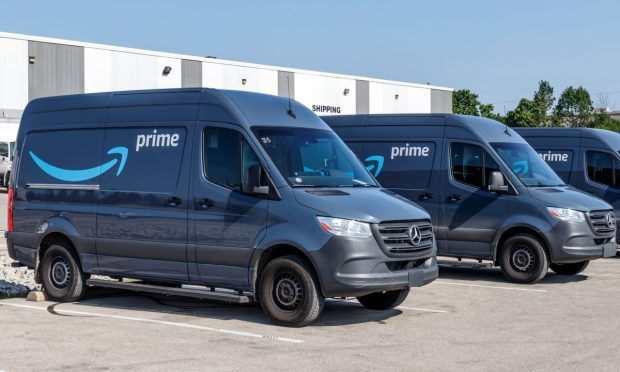Amazon Opening More Ultrafast Delivery Sites

Amazon has reportedly upped its investment in ultrafast delivery amid increased competition from rivals.
A key part of its delivery strategy is Amazon’s network of “same-day site” warehouses, The Wall Street Journal (WSJ) reported Sunday (Feb. 26). The report notes that Amazon has opened about 45 of the sites in the last four years and could expand to at least 150 in the next several years, according to MWPVL International Inc., which monitors Amazon warehouse operations.
MWPVL says these sites are primarily based near larger cities and deliver Amazon’s most popular items. Amazon tells the WSJ the new locations include Los Angeles, San Francisco and Phoenix, though the company declined to say how many same-day sites it has.
The news comes days after Target announced it was investing $100 million to expand its delivery operations. The retailer said last week it aimed to increase the number of sorting facilities from nine to more than 15 by the end of 2026.
“Sortation centers and our last-mile delivery capabilities support our guest experience and benefit our business — helping us deliver more efficiently and faster, at a lower cost while increasing our capacity,” Target said in a news release.
The release adds that Target has seen a 150% increase in the number of next-day deliveries since launching its first sortation center in 2020. Meanwhile, it anticipates its centers will deliver 50 million packages in 2023 year, almost double the amount from last year.
The company had said last year it wanted to double its investment in the centers, with CEO Brian Cornell pointing out that Target’s digital business had helped drive 90 million new customers to its store and website in the past three years.
Walmart last month announced plans to expand the Private Fleet Development Program it launched last year to improve deliveries for its growing eCommerce business.
The expansion lets Walmart workers apply to the company’s Associate-to-Driver program. After they conclude a 12-week training course and earn their commercial driver’s license, they’ll be able to begin driving for the retail giant.
Meanwhile, Amazon is coming off a year in which high spending and a drop in demand led the company to report a $2.7 billion loss last year, its first reported loss since 2014.
As noted here recently, Amazon’s massive expansion during the pandemic has also left it with outsized logistics operations.
“We knew when we were making that decision that we might be building more capacity than we needed,” CEO Andy Jassy told the Financial Times earlier this month, adding that the company chose to “shade on the side of consumers, and being able to serve them in that extraordinary time.”
Those comments echoed remarks Jassy made late last year at The New York Times’ Dealbook conference when he argued the company was forced to “go much faster” than anticipated to meet a rise in demand early in the pandemic.
